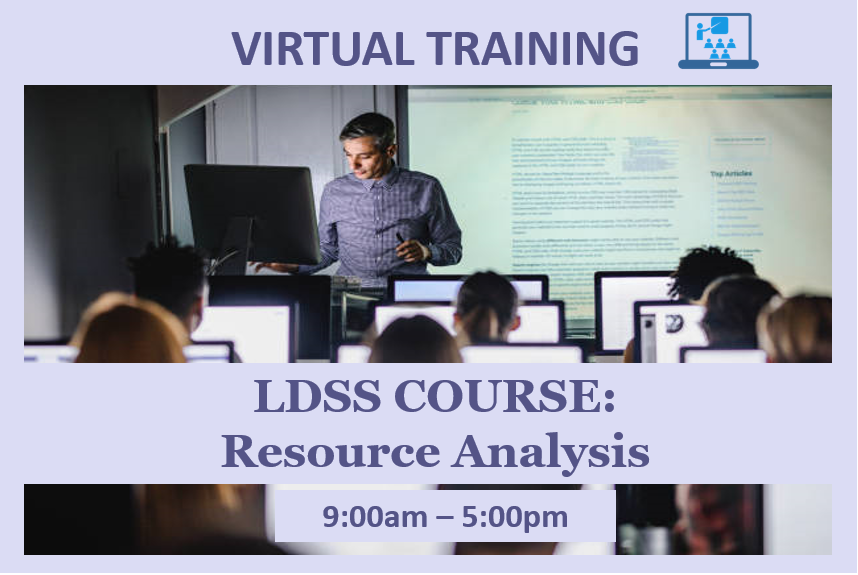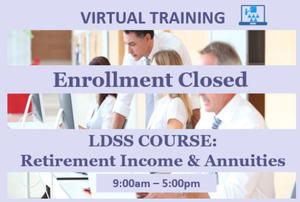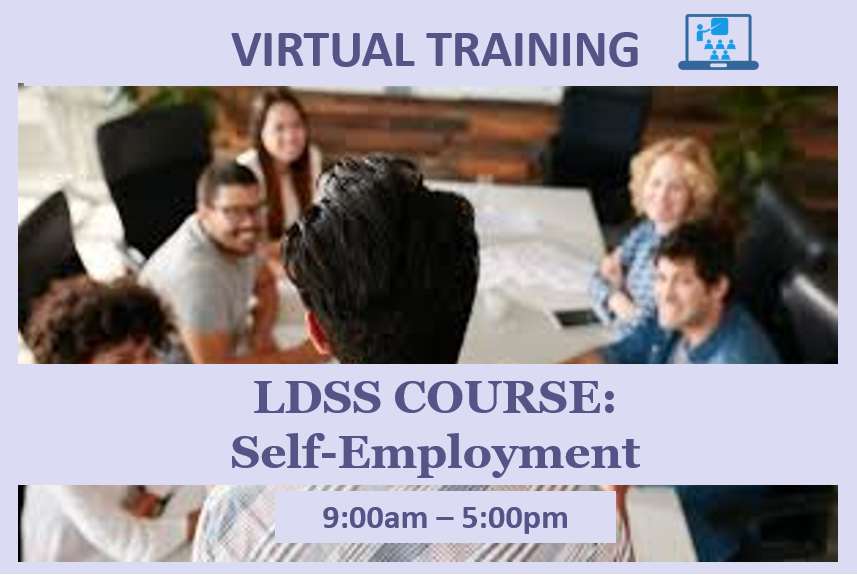Training Calendar
Calendar Overview
This calendar conveniently displays all scheduled trainings including instructor-led courses, webinars, and virtual trainings. When hovering over the thumb nail graphic, click on the course title link for additional information.
If any courses are scheduled in the near future, they will also appear in the Upcoming Trainings area below the calendar.
Important note: Trainees must be first be registered in the Absorb Learning Management System before they can enroll in any courses. See Course Registration within the respective Assistor Certification Trainings or LDSS Trainings pages for more detailed instructions.
This full-day program will review Immigration categories including the Qualified and Permanently Residing Under Color of Law (PRUCOL) immigration status. The session will also assist workers in determining the documentation that supports each immigration status. Emergency Medicaid coverage will also be addressed.
As a result of the training, participants will be able to:
Interpret immigrant eligibility guidelines for government funded health insurance programs
Identify the different immigration statuses
Recognize immigrants’ concerns
Review acceptable forms of documentation
Understand WMS coding for each immigrant category
This full-day program covers the basic Transfer policy: the look-back period, what constitutes a transfer, allowable transfers, Undue Hardship provisions, and resources vs. stream of income, determination of the Uncompensated Value (UV), calculation of the penalty period, and the implementation and impact of transfer penalty. Also included are the new rules and regulations enacted in 2006 from the Federal Deficit Reduction Act of 2005, including Promissory Notes and Life Estates.
As a result of the training, participants will be able to:
Explain the procedures related to transfers of assets for applicants/recipients
Distinguish between the treatment of an annuity with transactions before and after DRA legislation as they relate to transfer policies
Explain the effects of Life Estate on transfer
This full-day presentation will encompass all the processes involved with determining whether a Medicaid applicant/recipient's health insurance is cost effective and how to create and authorize health insurance payments using the eMedNY HIPP/MIPP application. An explanation for creating new HIPP/MIPP payees, third party policies, writing and authorizing payments is included. Various MOBIUS reports related to these processes will also be discussed.
As a result of the training, participants will be able to:
Review Health Insurance Premium Payment (HIPP)/Medicare Insurance Premium Payment (MIPP)
Distinguish the functions of the new eMedNY system including creating payees, policies and payments
Demonstrate how to navigate the eMedNY site
Indicate which programs require a cost analysis and how to complete one using the eMedNY system
Understand the various MOBIUS reports and identify required follow-up actions
This full-day program covers the basic principles of the Excess Income policy and its application. It will review the impact of the six-month accounting period and provide a number of examples illustrating the application of Excess Income policy. The Pay-In Subsystem and the Principal Provider Subsystem will also be briefly discussed.
As a result of the training, participants will be able to:
Review the Medicaid Excess Income Program policy
Explanation of who is eligible to participate with the Excess Income program
How the excess income amount is determined
Distinguish the types of Medicaid coverage to be authorized
Factors which affect applicability of bills
Explanation of the Medicaid Pay-In Program
Distinguish the functions of the WMS Pay In and Principal Provider Sub Systems
This full-day program covers eligibility for Qualified Medicare Beneficiaries (QMB), Specified Low-Income Medicare Beneficiaries (SLIMB), and Qualifying Individuals (QI). A brief review of the Qualified Disabled and Working Individuals (QDWI) Category will also be included. The eMedNY system and the entries required by this program will also be addressed in the presentation.
As a result of the training, participants will be able to:
Understand the different parts of Medicare coverage available and the coverage provided
Determine who is eligible for the Medicare Savings
Understand the benefits available with each MSP category
Review and make entries into the eMedNY system
This full-day program reviews resources most commonly found in Chronic Care cases, including stocks, bonds, and brokerage accounts. A method for tracking assets moved from one investment instrument to another (selling stock in one brokerage account, moving the resulting funds to a bank account or re- investing the money into other stocks or bonds) will be reviewed for use in identifying transfers during the look-back period. Treatment of Retirement Funds and Annuities as an income or a resource is covered as well as Income Producing Property. Life Insurance, Burial Funds and Irrevocable Pre-Need Funeral Agreements will also be reviewed.
As a result of the training, participants will be able to:
Interpret SSI-Related policies related to proper sequence to be used in the assessment of burial funds and space items as resources
Determine the value of an annuity
Distinguish between the treatment of an annuity with transactions before and after DRA legislation
Track and assess a variety of resources for possible transfer
Evaluate types and values of resources, including life insurance, burial funds, stocks, bonds, and mutual funds
This full-day program will review the types of tax-qualified funds (including pensions, supplemental retirement funds and individual retirement accounts) that may be owned by clients applying for Medicaid benefits. The Medicaid policy on these holdings will be discussed including Spousal Impoverishment situations. This program will also review the basic annuity terms, the types and uses of annuities, Medicaid policy on annuities, and transfer implications.
As a result of the training, participants will be able to:
Determine the value of a Retirement fund
Determine the value of Annuity
Distinguish between the treatment of an Annuity with transactions before and after DRA legislation
This full-day program addresses the treatment of income and resources associated with various self- employment situations, including sole proprietorships, partnerships, S corporations and rental property. The program includes a discussion on income tax schedules associated with the various self- employment situations, allowable income and resource disregards and exemptions for MAGI-Like, SSI-Related, and ADC-Related categories
As a result of the training, participants will be able to:
Identify deductions allowed by IRS to arrive at net profit
List steps necessary to determine net income when a business is new or when tax returns are not filed
Understand the Self-Employment worksheet to be used by applicants/recipients (A/Rs) to calculate their monthly business income
Complete the 6%-rate-of-return test
Identify IRS forms and schedules used to calculate Sole Proprietorship, partnership and “S” corporation profits/losses
This is a 7-day course that will held on the following dates:
Monday January 5th, 2025
Tuesday January 6th, 2025
Wednesday January 7th, 2025
Thursday January 8th, 2025
Monday January 12th, 2025
Tuesday January 13th, 2025
Wednesday January 14th, 2025
LDSS Medicaid eligibility staff who have limited experience with a Medicaid caseload, and other staff as determined by the New York State Department of Health (NYS DOH).
This seven-day training session provides participants with an introduction to New York State's Medicaid program, with a focus on the eligibility for individuals who need community-based medical care.
As a result of the training, participants will be able to:
Identify the various public health insurance programs available to New York State residents.
Separate applying household members into distinct categories
Recognize the different levels of eligibility within the Community Medicaid program.
Interpret and apply community Medicaid eligibility policy and budgeting methodology.
Summarize applicant's eligibility decisions based on information submitted and budgeting results.











